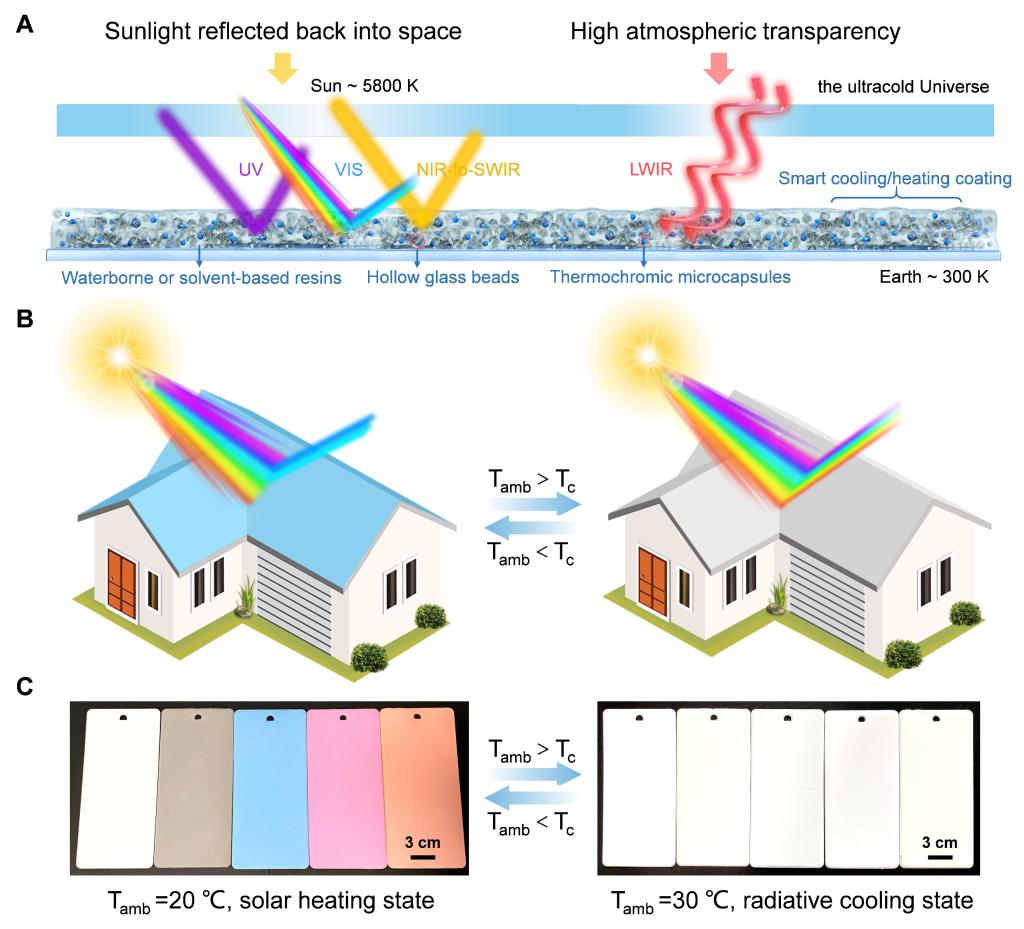Recently, Professor Zhang Yinan and Associate Fellow Wang Tong from Energy Photonics Innovation Team of the Institute of Photonic Chips led by Academician Gu Min together with Fudan University demonstrated a low-cost and scalable self-adaptive radiative cooling and heating. In the meanwhile, the scalable and self-adaptive subambient radiative cooling and above-ambient solar heating coatings are demonstrated when reversible thermochromic microcapsules are added, which significantly expands the scope of year-round energy-saving applications. The research paper titled “Scalable and waterborne titanium-dioxide-free thermochromic coatings for self-adaptive passive radiative cooling and heating” was published in Cell: Cell Reports Physical Science by them.
They have reported a TiO2-free white coating prepared by simply mixing polymers and HGBs of specific sizes. This TiO2-free fabrication strategy is very versatile and can be used for various waterborne and solvent-based coatings, and the white coatings can be produced at a large scale and conveniently coated on various substrates through traditional drop casting, spraying, roller painting, or spin-coating methods. Accordingly, these coatings are highly promising for replacing TiO2-based white coatings and to significantly decrease the cost of coatings, environmental pollution, and the potential cancer risk of TiO2 pigment. Moreover, the TiO2-free white coatings still possess both high average solar reflectance (∼0.96) and high LWIR near-normal emittance (∼0.94), which allow for subambient cooling of ∼7.8°C during the night and ∼7.1°C under direct sunlight, which is comparable with or even superior to those of state-of-the-art PDRC materials. More importantly, this kind of white coating can be further colorized to fabricate smart, self-adaptive, and color coatings for radiative cooling and solar heating that have not been achieved by previously reported PDRC systems. This fabrication process is highly efficient, low cost, and ecofriendly, and can be readily extended for scalable manufacture of TiO2-free white or self-adaptive year-round energy-saving coatings for the new design paradigm of buildings.


 Home
·
News & Events
·
Content
Home
·
News & Events
·
Content

